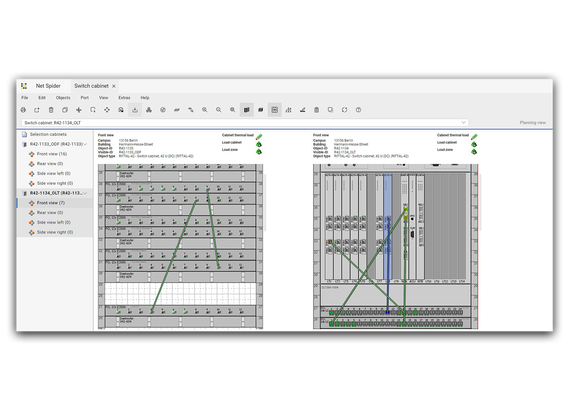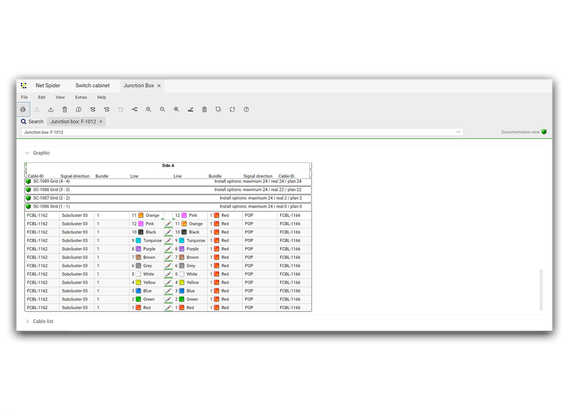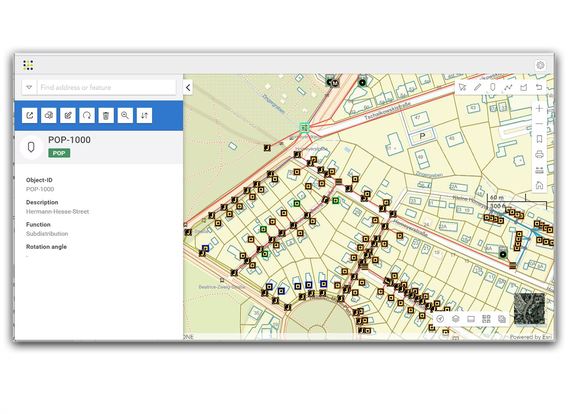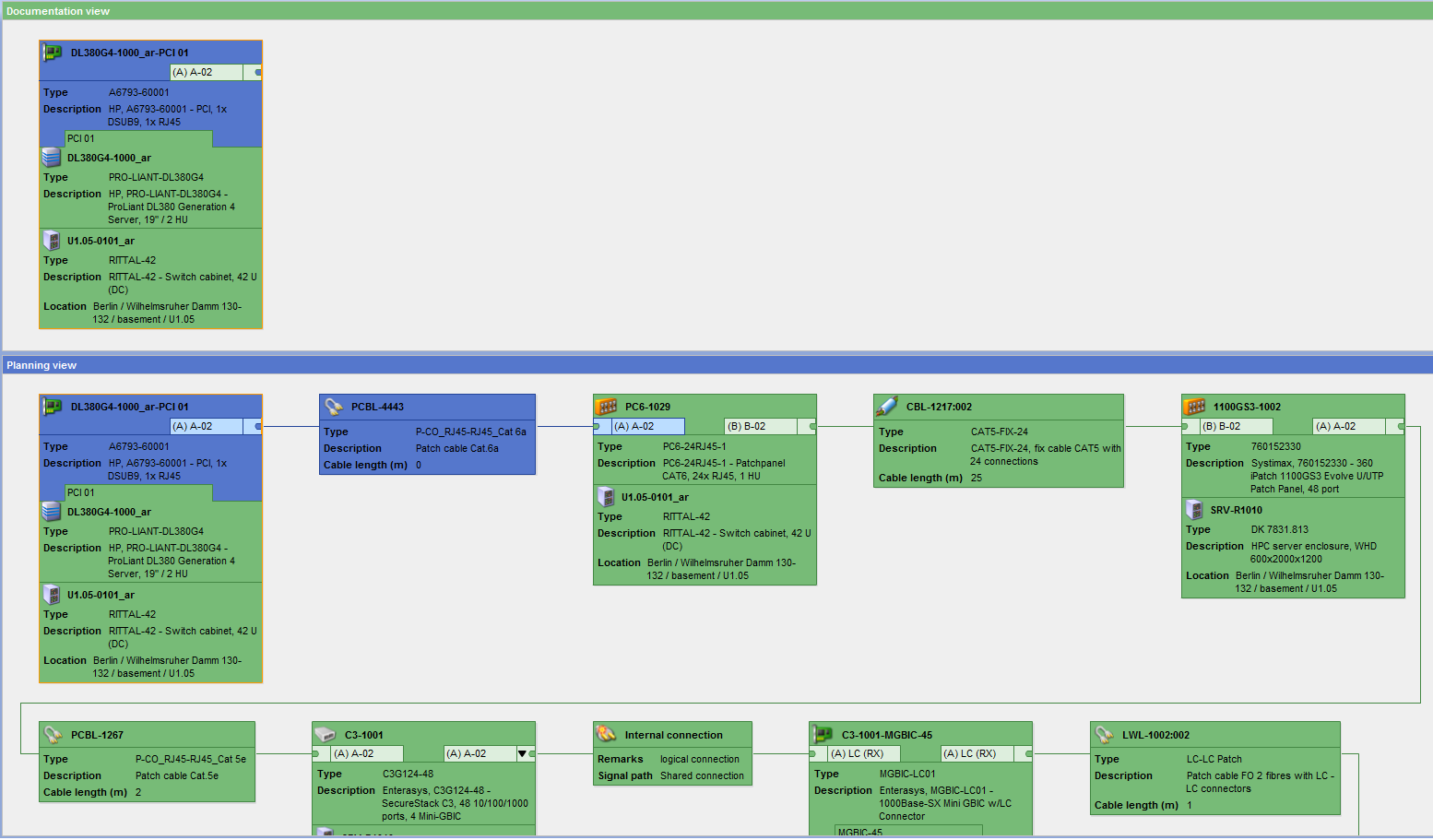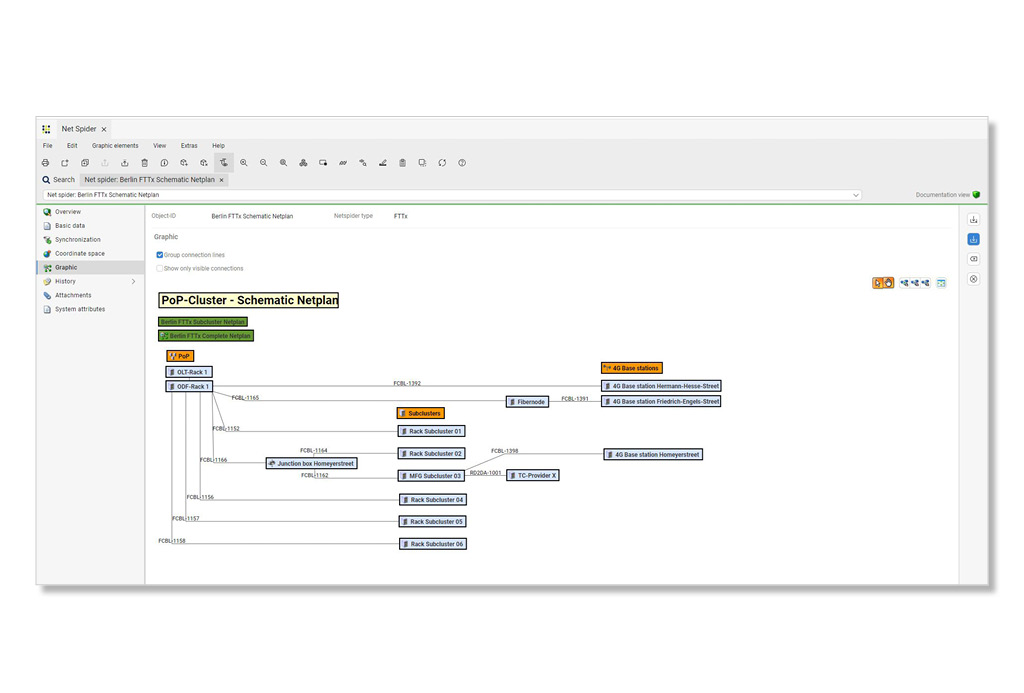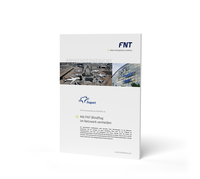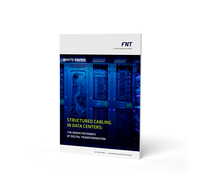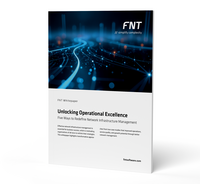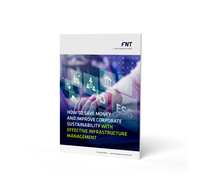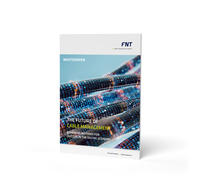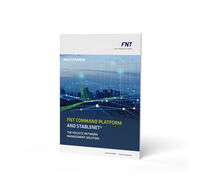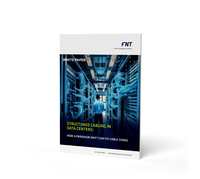Cable management is a complex task, not only because of the sheer volume, length and distribution of cables, but also the large variety of different cable types and their functions. FNT's professional software for cable management brings order to cable chaos by documenting, planning, and managing the entire network infrastructure. It helps organize the cabling and connectivity hardware so that it is easy to identify components, troubleshoot problems, and make future upgrades easier.
Advantages of FNT's Cable Management Software
All network resource data of the passive infrastructure is recorded and maintained in a central data repository along with dependencies between them and services running over them. Correct data about the current state of the network is available to all processes that need it. Data stays synchronized with automatic updates to the documentation when planned changes are executed.
With planned changes based on accurate as-is documentation, tasks are performed properly from the beginning and the need for costly and time-consuming rework and truck rolls is eliminated.
Reliable and thorough documentation enables immediate identification of affected services and customers in case of an outage or other performance issue. Use this information to react in a targeted manner when faults occur and minimize business interruptions.
Highlights of FNT’s Cable Management Software
FNT Cable Management software documents, plans and manages the entire passive inside and outside plant network infrastructure. It creates a detailed overview of the entire cable network and stores this information as a digital twin of the hybrid network. The digital twin helps ensure cabling is efficiently and effectively routed, organized, and supported – inside, outside, and between buildings.
The FNT solution covers all types of fiber, copper and coax network topologies and all deployed technologies. Integrated georeferenced and schematic representations of the network infrastructure facilitate planning, impact analysis and fault localization in case of failures.
FNT Cable Management provides complete transparency into the network infrastructures and the services running over them, making it easier to manage and operate even complex infrastructures efficiently. It’s used by:
- Data Centers Operators to oversee passive cabling equipment and infrastructure including trays, master patch management and network port capacities of the data center. It enables the optimization of lead times for changes to the physical network and the speeding up of support processes to keep network downtime to a minimum.
- IT organizations to document structured cabling within buildings, between buildings on a campus, and across the entire wide area network (WAN). This ensures all components of the infrastructure are managed and visualized together for maximum transparency into patching, configuration, and the locations of active endpoint devices in the network.
- Service Providers and Network Operators, in combination with FNT’s unified resource management solution, to manage the millions of physical assets, logical resources, and connections in the network. This complete view of the network infrastructure is needed to ensure fiber-optic networks in the transport and mobile fronthaul, midhaul and backhaul, FTTx infrastructure in access networks, and HFC networks can handle the massive amount of data being generated.
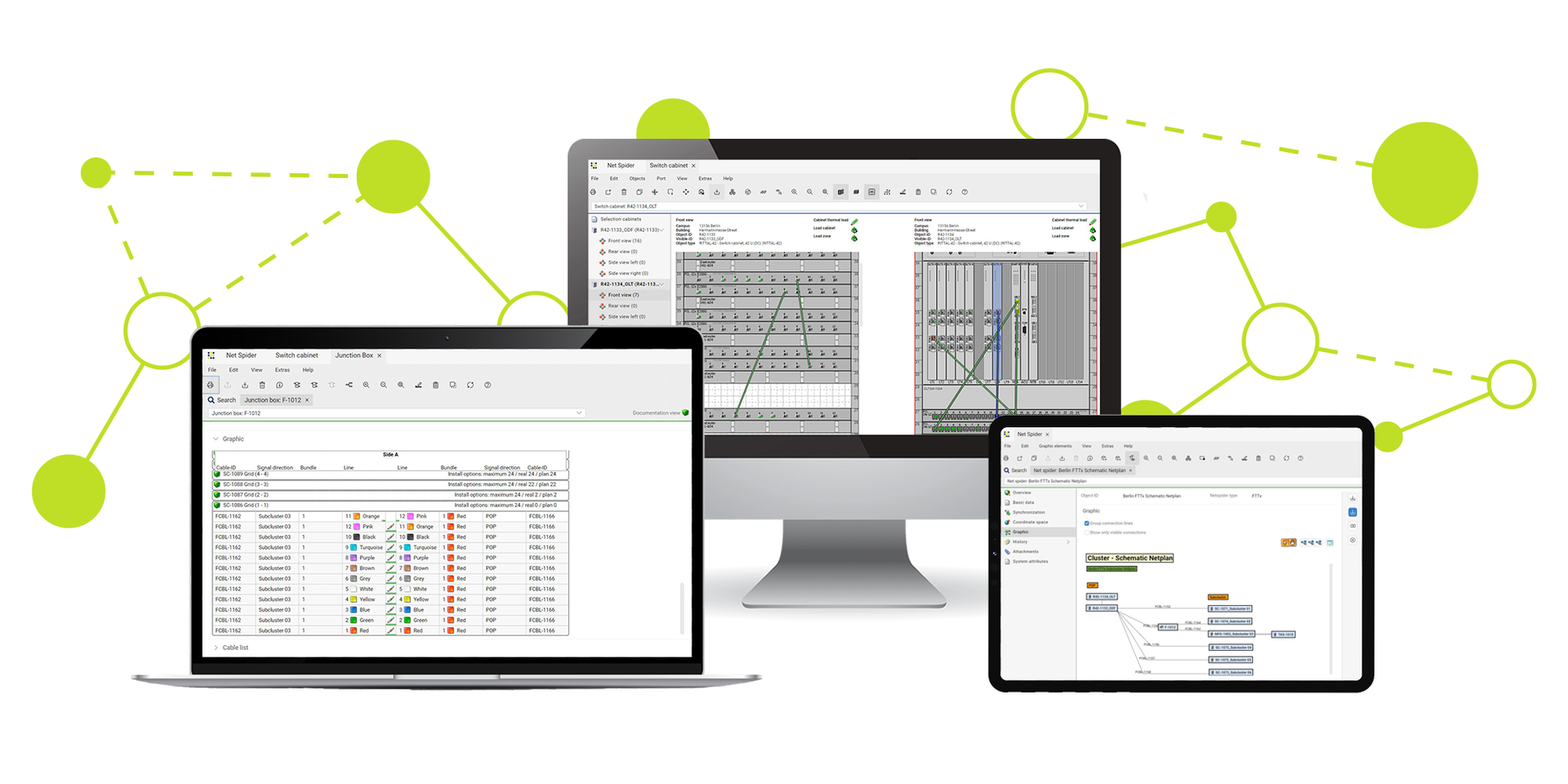
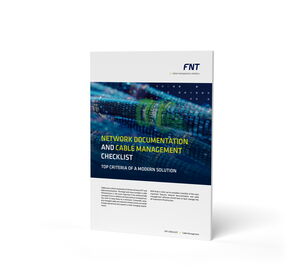
Cables are a critical component of almost all areas of IT and telecommunications. Failures or defects can have serious consequences. Therefore, the larger, more complex and system-relevant cable infrastructures are, the more important their professional management is. Read what makes a modern documentation and management solution stand out.
Would you like to experience the FNT solution for Cable Management live?
.
FAQ: Cable Management
Cable management software is a tool that helps organizations efficiently plan, document, and manage their network infrastructure, including the organization and tracking of cables and associated equipment. Businesses with complex IT setups, data centers, or extensive network configurations are the primary users of this software.
Cable management software keeps track of all assets in the cable network and makes it possible to know at any given time which resources are in use, which are planned, their status, and all relevant details. It maps cables that are present (physical mapping), where they run (geo-referenced mapping) and which dependencies exist with applications and processes in the network or infrastructure (logical linkage).
Since the network is always evolving, keeping documentation up to date is critical. Integration capabilities and automated data exchange with other systems are therefore of paramount importance in a cable management solution.
There is not one uniform name for cable management software, which can make researching and comparing options difficult. Fiber management software, fiber optic software, cable planning and patch management software are all classified as cable management software.
Cables are a critical component in almost all areas of IT and telecommunications. The larger and more complex a cable infrastructure is, the more important it be professionally managed. A properly managed cable infrastructure is easier to keep operational and expand to meet changing requirements. Properly managing the cable infrastructure gives users the centralized data and management capabilities they need to keep their offices, networks, supply chains, and production lines running smoothly.
Documentation and Planning: Recording the assets in the cable network is the starting point for cable management. This is the basis for planning the physical layout of cables, connections, and network devices. It includes details such as cable types, lengths, and connections between different network components. It includes relationships and dependencies across all technologies and layers, from the building all the way up to applications and services.
Asset Tracking: Features for tracking and managing network assets, such as servers, switches, routers, and other devices, throughout their lifecycle is an important capability. Systematically managing assets helps organizations not only keep an accurate inventory, but also maximize the value of every asset in use and facilitate troubleshooting and maintenance.
Visualization: Visual representation of the network infrastructure allows users to view and understand the physical layout of cables and connections. This can help identify potential issues and optimize the network layout. Visualizations can be georeferenced, graphical, or schematic. All play a role in helping to efficiently execute activities and tasks.
Automation: Advanced solutions offer automation features for certain tasks such as reporting, identifying unused equipment, and suggesting optimal cable routes. Automation streamlines processes and reduces the likelihood of errors.
Integration with Other Systems: Integration with systems such as monitoring tools or configuration management databases (CMDBs) enable advanced functionality from a cable management solution. Interfaces to source systems together with an ETL staging area for data cleansing prior to import streamline integration scenarios.
Reporting: Reports are essential for analyzing the health and performance of the cable network. Asset utilization, capacity and connectivity are examples of relevant metrics a cable management solution should be able to provide reporting on.
Would you like to know more about cable management? Then you might be interested in the following:


